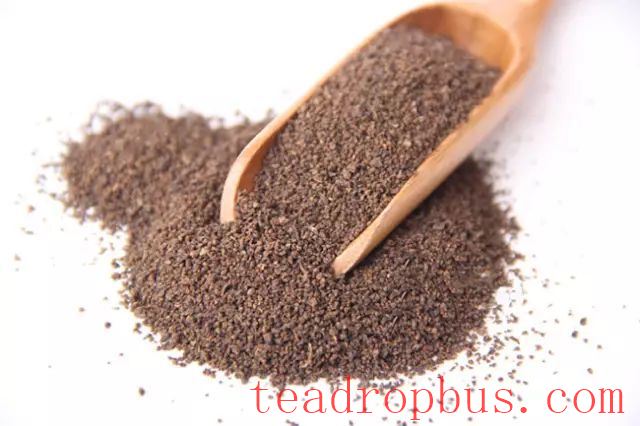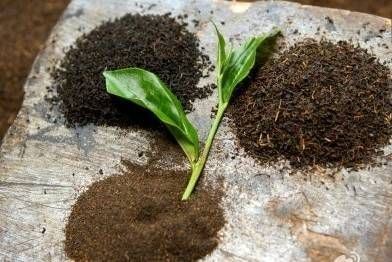What is “Broken Black Tea”?
Black Tea can be divided into three types based on processing methods: Gongfu black tea, broken black tea, and Lapsang souchong. Broken black tea has a production history of over a century. It is made by withering and rolling fresh tea leaves, then mechanically cutting them into granular fragments. After fermentation and drying, the tea is ready. The main difference between broken black tea and gongfu black tea lies in its finer and more fragmented appearance, hence the name “broken black tea.”

Classification of Broken Black Tea
Broken black tea is classified into four categories: leaf tea, broken tea, fannings, and dust. These different types are produced using various machinery, leading to quality differences, but they all fall under four main classifications: leaf tea, broken tea, fannings, and dust.
Leaf tea, a traditional type of broken black tea, features tightly bound, evenly sized strands and a dark lustrous color. Its aroma is fragrant, the liquor red and bright, and the taste full-bodied. The infused leaves are bright red with many tender stems.
Broken tea is characterized by heavy, even granules and a dark or brownish color. Its aroma is rich, the liquor red and bright, and the taste strong, fresh, and brisk. The infused leaves are uniformly red.
Fannings, which are flaky or crumpled pieces, have a dark brown color. Their aroma is relatively pure, the liquor reddish, and the taste somewhat strong yet slightly astringent. The infused leaves are uniformly red.
Dust consists of sandy particles that are dark or brownish in color. The liquor is dark, the taste slightly coarse and astringent, and the infused leaves clear and red. The primary producing areas for broken black tea include Yunnan, Guangdong, Hainan, and Guangxi.
Geographical Classification of Broken Black Tea: The main producing provinces (autonomous regions) of broken black tea are Yunnan, Guangdong, Hainan, Guangxi, Guizhou, Hunan, Sichuan, and Fujian, among which Yunnan, Guangdong, Hainan, and Guangxi produce the highest quality broken black tea using large-leaf varieties.
brewing Methods and Steps for Broken Black Tea
Due to the unique manufacturing process and the finely ground nature of broken black tea, many tea enthusiasts ask how to Brew it properly. Here are some steps to follow:
First: Because broken black tea is finely ground, its flavor is released quickly during brewing. You can pour off the liquor after 4-5 seconds when brewing broken black tea.
Second: To ensure clarity and visual appeal of the liquor, place an appropriate amount of dry tea in a special filter paper bag (or cheesecloth) to create a simple “teabag.” When pouring off the liquor, use a strainer to avoid small tea particles affecting the color of the liquor.

Manufacturing Process of Broken Black Tea
The manufacturing process of broken black tea can be categorized into traditional and non-traditional methods.
Traditional broken black tea is produced using conventional rolling methods, resulting in a robust flavor but lower yields. Non-traditional methods include rotorvane (referred to as RotOvane overseas), C.T.C. (Crush Tear Curl), and L.R.P. (Laurie Tea Machine) broken black teas. These methods completely transform the traditional rolling method, achieving rapid cell disruption through machinery. The fermentation is even and quick, requiring prompt drying to maintain the characteristic strong and fresh flavor.
Indian Broken Black Tea
India is the largest producer and exporter of broken black tea. In 1835, Assam, India, began planting tea, with seeds imported from China, and Chinese experts were sent to guide the cultivation and production techniques, including the production of lapsang souchong. Later, the production process was simplified, eliminating pan-firing and replacing it with fermentation and baking to produce a product similar to Chinese gongfu black tea.
After W.S. Lyle invented the first rolling machine in 1874, George Reid developed a cutting machine in 1876, which cut the tea leaves into short and fine pieces, marking the official emergence of broken black tea. Over nearly a century, new machinery was continuously invented, and corresponding processing technologies emerged. Production methods were largely established, products were standardized, and consumption habits were formed, making broken black tea a global beverage.